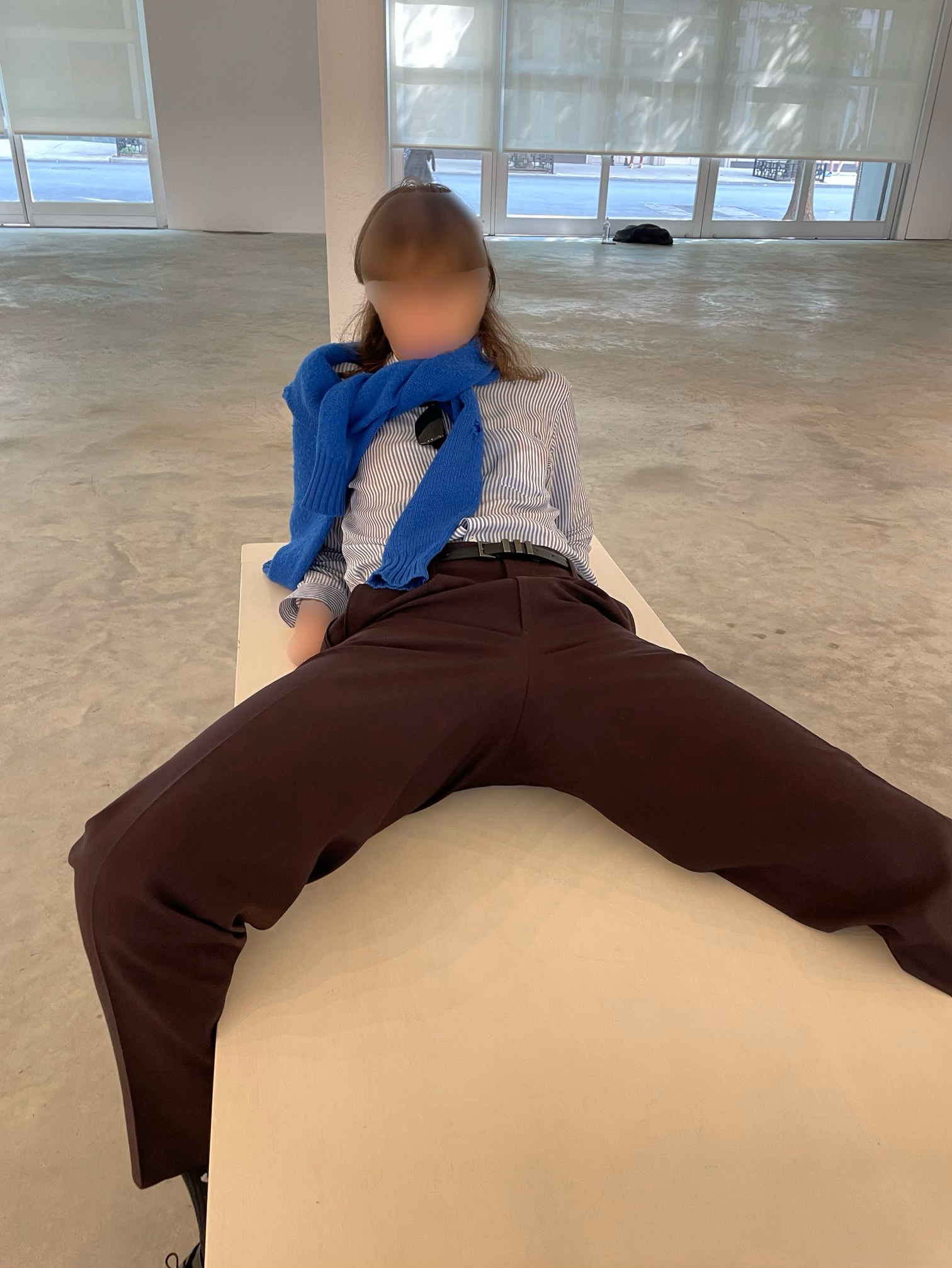well she, they, um — not whispering mannerism but telling non
Trisha Donnelly at Matthew Marks
May 5 – June 17, 2023
There are two modes in this show: There is what I experienced while standing inside of the exhibition looking and thinking, and then there is all that extrudes post standing in the space. I am wary that certain supports or referents that I bring in that are not so loudly alluded to perpetuate a type of privileged institutional support that is often more generous than what the work seems to want to be.
*Describe space briefly*
There is lots of open space, black-and-white photos pushed toward the back three-quarters of the room, then two benches.
Upon my second visit, I notice that there are 14 glass windows/skylights in the back of the gallery, just like there are 14 photos presented here.
There are two benches placed between the columns in the gallery, which seems very specific. My mind immediately goes to a resting place, a gift for viewing, seating, yet the scale of these works appears like dark murky squares from this distance, undercutting traditional modes of benches placed in museums as high real-estate viewing points.

The prints themselves appear to be printed by hand with additive dark-room photo solution interventions, an expression that brings in formal elements that those who are familiar with Trisha’s work could call out as her hand or signature. I do think of painting or drawing when seeing some of these gestures in printing, but these observations of possible modernist abstraction in photo don’t mobilize much more in me besides art history. As the scale and optical value of photos are muted, there isn’t much other pleasure that arrives, even if I were to ride the wave of romantic abstraction.
There’s a certain consensus that photography is incapable of producing artistic authorship like painting or sculpture, for instance.
In this case, photography is very much concerning itself as object, the glass being most present and placed over the photographic paper here with no frame but pressed against, kissing the paper with nails instead, referencing the glass of a lens, yet the glass itself is not listed on the checklist.
A camera lens takes all the light rays bouncing around and uses glass to redirect them to a single point, creating a sharp image. Maybe the photos are here to activate the two benches and/or the viewers’ choreography of being the voyeur of the photos and benches. Walk in, out, search for reflection, sit. Is this show about the benches?
Aperture is one of the three pillars that determine the exposure of your photographs. Aperture is the opening in your lens through which light passes through. This part of the camera has small, thin blades that shrink or expand depending on how much light you want to let in. In thinking about these mechanics, I assume an attempted mirroring is afoot with the viewer; let’s say they are the light. Then there’s actual light, then the wall and print, which is a direct kiss to architecture and glass. How much light do you want in your exposure? Does Donnelly think about the kid who may train in from Queens to see this exhibition? What light does she want to let in? This exhibition feels even more closed in on itself than her previous shows: A literal and figurative flattening.